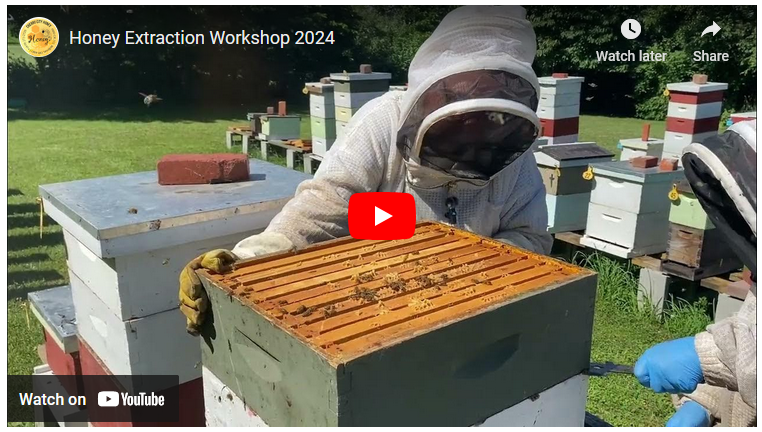1. Preparing Your Equipment
Cleanliness is Key
Before you begin extracting honey, ensure all your equipment is thoroughly cleaned and sanitized. This includes the extractor, honey tanks, filters, and any other tools you’ll be using. Clean equipment prevents contamination and ensures the highest quality honey.
Assemble Your Tools
Have all your tools ready and within reach. This includes your bee suit, smoker, hive tool, uncapping knife, and containers for the honey. Being organized will make the process smoother and more efficient.
2. Harvesting Honey Frames
Choosing the Right Frames
Not all frames are ready for harvest at the same time. Look for frames that are at least 80% capped. Capped honey means that the moisture content is low enough for long-term storage.
Gentle Removal
When removing frames from the hive, be gentle to avoid harming the bees or damaging the comb. Use a bee brush or gentle shaking to remove bees from the frames.
3. Uncapping the Honeycomb
Use an Uncapping Knife or Fork
An electric uncapping knife can make the process quicker and more efficient, especially if you have a lot of frames. For smaller operations, an uncapping fork works just as well.
Keep It Steady
Hold the frame over an uncapping tank to catch any dripping honey. Use steady, even strokes with your knife or fork to remove the wax cappings without damaging the comb.
4. Extracting the Honey
Load the Extractor Properly
Balance is crucial when loading your extractor. Place frames evenly to avoid wobbling, which can cause damage to the extractor and frames.
Gradual Speed Increase
Start the extractor at a low speed and gradually increase. This prevents comb damage and ensures that honey is extracted efficiently.
5. Filtering and Bottling
Filter for Purity
After extraction, pour the honey through a fine mesh filter to remove any remaining wax particles or bee parts. This step ensures your honey is clear and pure.
Time to Bottle
Once filtered, it’s time to bottle your honey. Use sterilized jars and fill them to just below the rim. Seal tightly to preserve freshness.
6. Storing Your Honey
Cool and Dry
Store your honey in a cool, dry place away from direct sunlight. Proper storage prevents fermentation and keeps your honey in perfect condition.
Label and Date
Don’t forget to label your jars with the harvest date. This helps keep track of your stock and ensures you use the oldest honey first.
Bonus Tips
Managing Bees During Extraction
Use a smoker sparingly to calm the bees when opening the hive. Overuse can agitate them and affect honey flavor.
Maintenance and Safety
Regularly check and maintain your extraction equipment. Safety first – always wear your protective gear, especially when handling bees.
Conclusion
Honey extraction is a rewarding process that requires patience, care, and the right techniques. Our video covers these tips and more, providing you with a comprehensive guide to harvesting your honey. Check out our latest video for a detailed, step-by-step walkthrough and start mastering the art of honey extraction today!
Watch our video here and don’t forget to subscribe to our channel for more beekeeping tips and tricks!
Feel free to reach out in the comments below with any questions or share your honey extraction experiences. Happy beekeeping!



